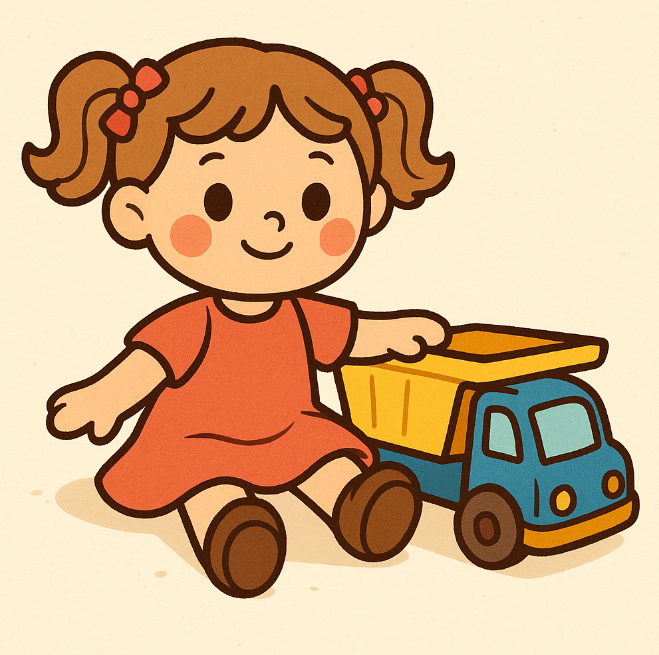
How Toy Choices Shape Kids’ Futures
A dad walks into a toy store to buy his 5-year-old a birthday gift. He scans the shelves: superhero action figure, pink tea set, building blocks, baby doll. Without hesitation, he grabs the action figure for his son.
It seems innocent. But here’s the twist—research shows that in those split seconds, parents may be shaping their child’s identity in ways that last for years.
That’s the finding from a groundbreaking study introducing the Gender Toy Choice (GTC) measure, a new tool that reveals just how much our everyday parenting decisions reinforce gender norms—often without us realizing it.
The Science Behind Toy Choices
Most past research on “gendered parenting” relied on surveys and interviews—methods that often produce answers we think sound good, rather than what we actually do. The GTC flips the script. Instead of asking parents what they believe about gender, it watches what they pick for their kids in real time.
Here’s how it works:
- Parents are shown a grid of toys—from trucks to dolls to gender-neutral playsets.
- They select two they’d most like to give and two they’d least like to give their preschooler.
- Each toy is rated for how stereotypically “masculine” or “feminine” it’s considered.
By comparing the most- and least-wanted choices, researchers can see whether parents tend to reward gender-typical play or avoid gender-bending options.
What the Study Found
Across studies in Israel and the U.S., with hundreds of mothers and fathers:
- Almost all parents chose toys that matched traditional gender stereotypes for their kids.
- This was true regardless of what they said about gender roles in surveys.
- Parents of boys were more likely to avoid “feminine” toys (like dolls or play kitchens) than parents of girls were to avoid “masculine” toys (like trucks or building sets).
In other words: when it came to what kids “shouldn’t” play with, the rules were stricter for boys.
Why This Matters for Child Development
Toys aren’t just stuff in a playroom—they’re tools for learning. Research shows they shape:
- Problem-solving skills (think: building blocks, puzzles)
- Nurturing and empathy (think: dolls, pretend kitchens)
- Spatial reasoning (often linked to STEM fields)
When kids are steered toward only certain types of play, they may miss out on skills tied to other interests—or internalize the message that those skills “aren’t for them.”
For example:
- A girl discouraged from playing with building toys may get fewer chances to develop spatial skills, which are linked to later interest in engineering.
- A boy kept away from dolls and pretend caregiving may miss early opportunities to practice empathy and communication—skills essential for healthy relationships and emotional intelligence.
A Closer Look: Prescriptive vs. Proscriptive Norms
The researchers noticed something fascinating:
- Parents didn’t just choose what their kids should do (prescriptive norms).
- They also made strong choices about what kids shouldn’t do (proscriptive norms).
This mattered more for boys—especially avoiding toys coded as feminine. Social scientists have long found that breaking gender “don’ts” sparks stronger pushback than not meeting gender “shoulds,” and this study confirmed it in real-world toy choices.
Breaking the Cycle
The takeaway isn’t to feel guilty about what’s in your kid’s toy box. It’s to get curious:
- Is your child’s play environment balanced? Are they getting exposure to all types of skills?
- Are you avoiding certain toys without realizing it?
- Do you ever offer a toy outside the stereotype just to see what happens?
Practical Tips for Parents & Educators
- Audit the Toy Box
Spread everything out and notice patterns—do toys fall into one gender category? - Mix It Up
Rotate in toys from across the gender spectrum—this keeps play fresh and skills varied. - Watch Your Language
Swap “That’s for boys/girls” with curiosity: “Want to try this one?” - Model Openness
Kids notice what adults do. Join in pretend cooking or building regardless of your own gender. - Advocate at School
Encourage classrooms to stock a variety of play options so all kids can explore different skills.
The Bigger Picture for Schools
This research matters for school psychologists, counselors, and early educators because:
- Classroom play corners and after-school clubs often reflect the same biases.
- Early intervention—like offering all children the full range of toys—can expand learning opportunities and challenge limiting norms.
- Awareness training for staff can help reduce unconscious steering.
Let’s Talk About It
- What’s the biggest mental health or development challenge you see connected to gendered expectations in schools?
- How can schools and families work together to give kids more freedom in how they play and learn?
- Has there been a time when a child surprised you by loving a toy you didn’t expect?



